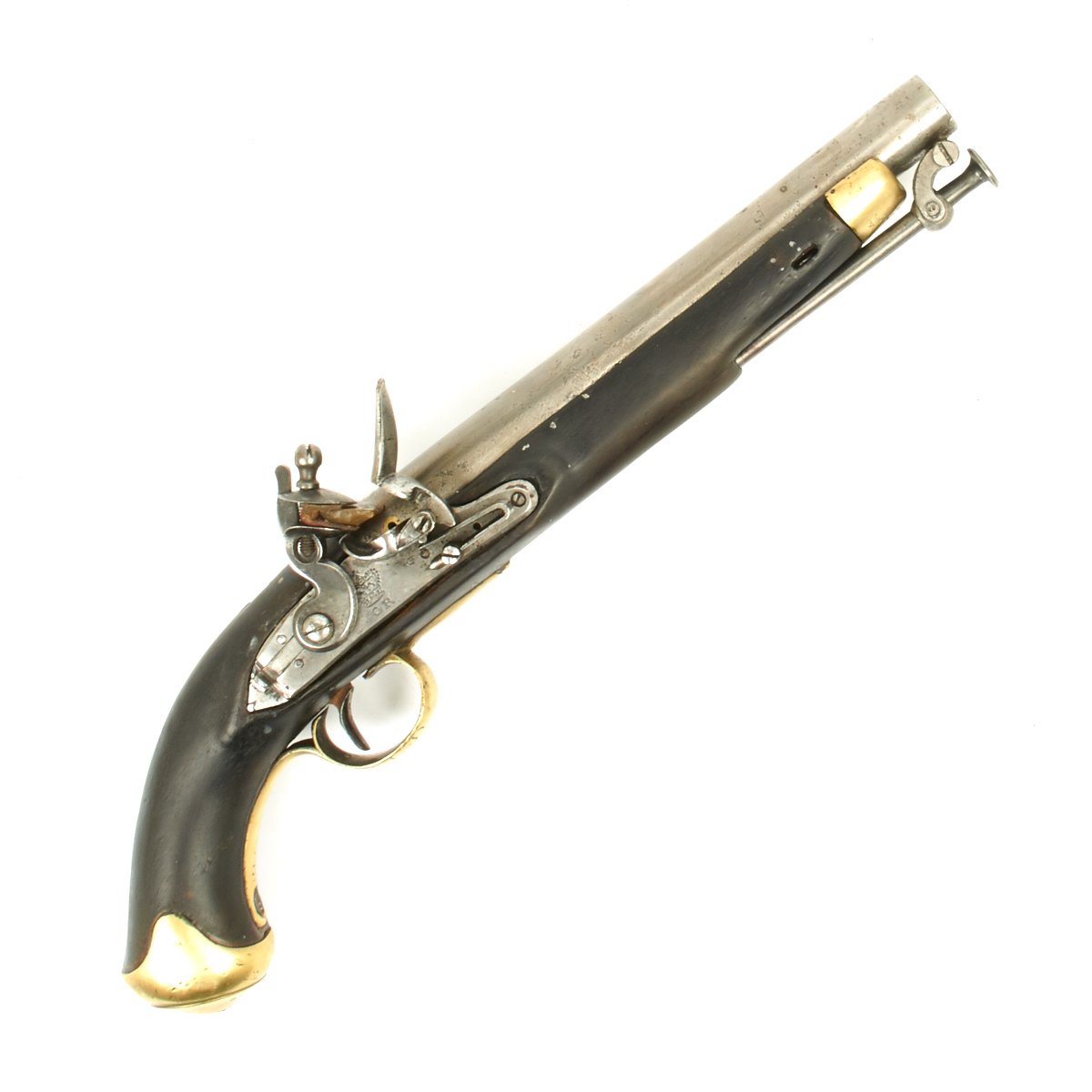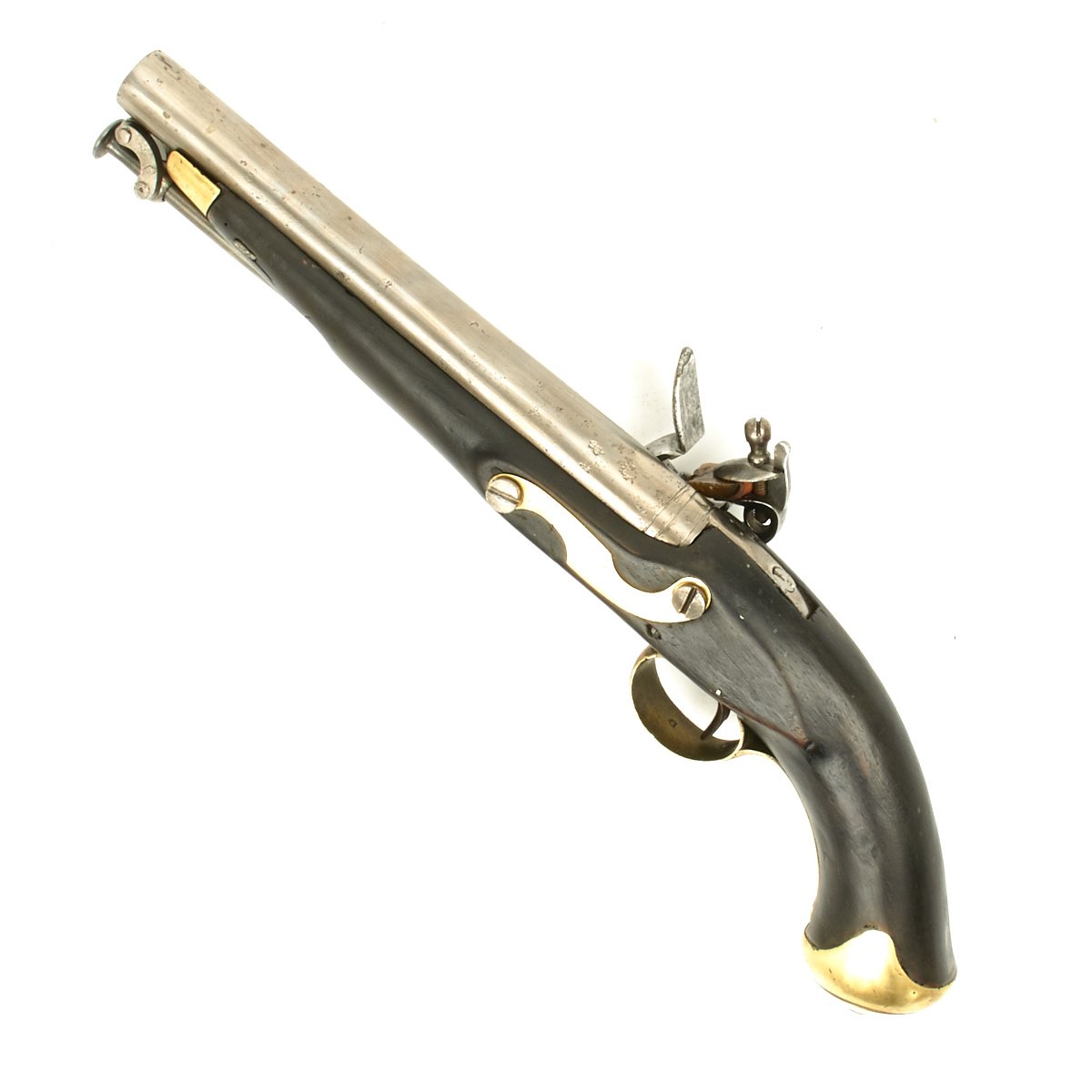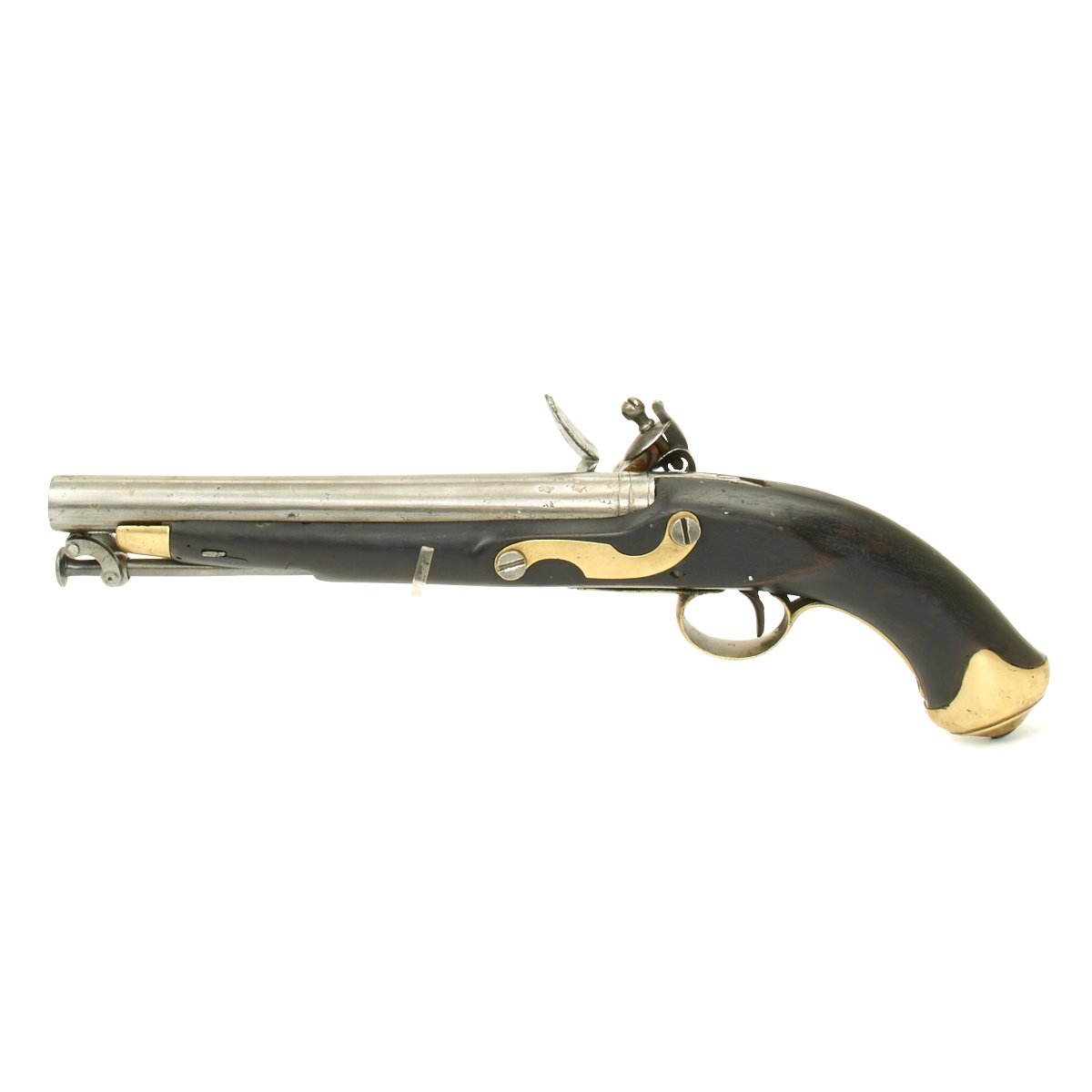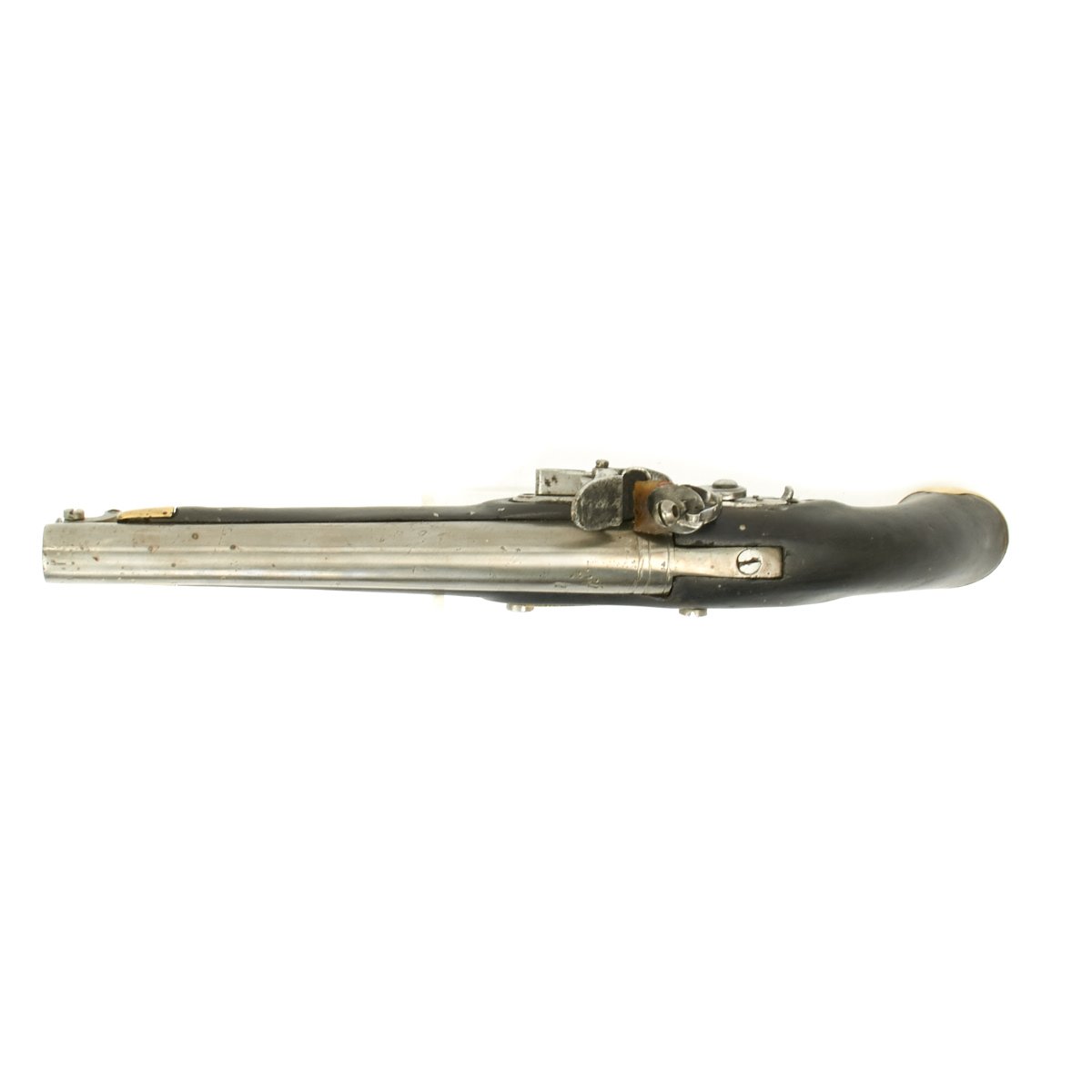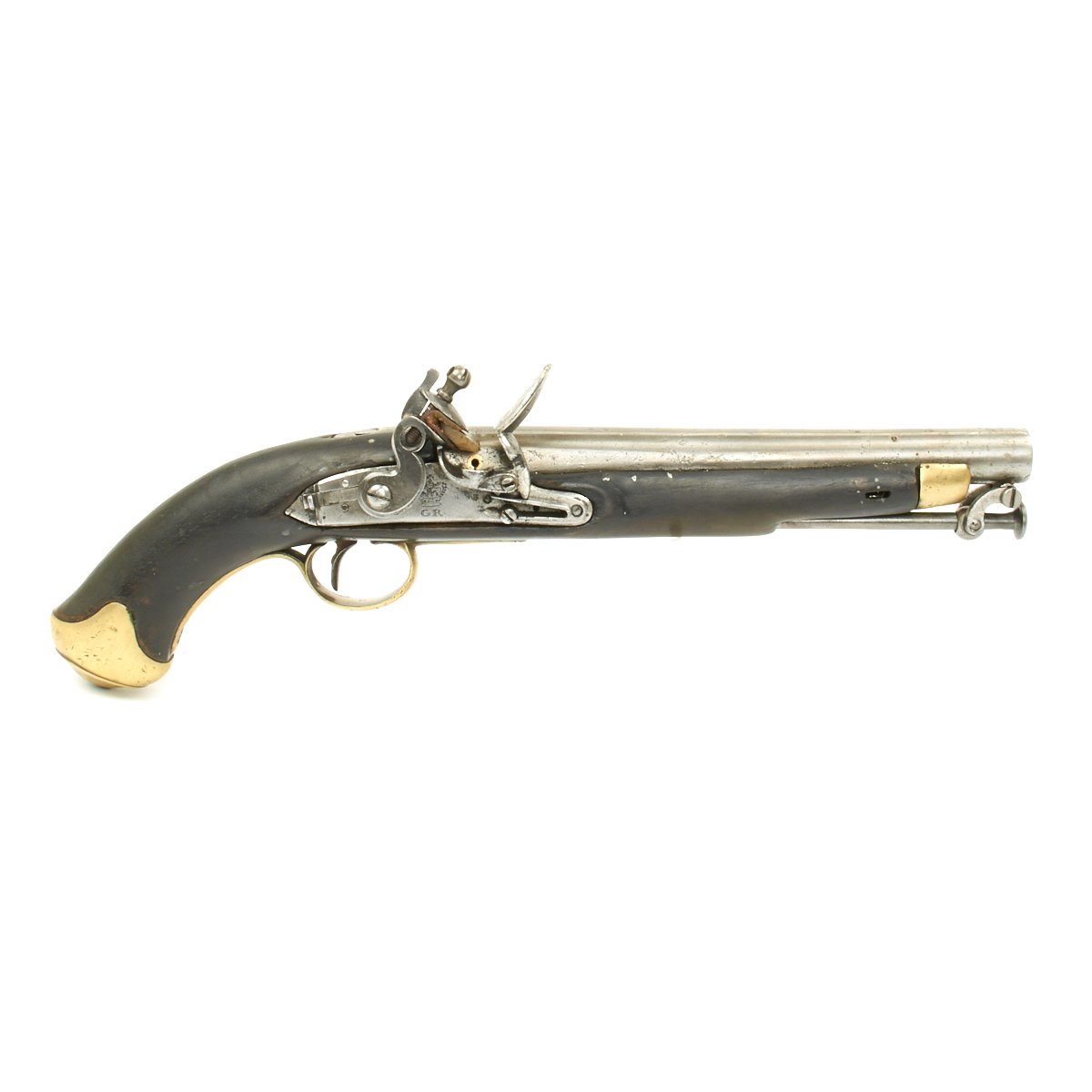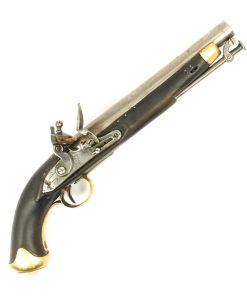Original British Flintlock New Land Pattern 23rd Light Dragoons Marked Pistol – Circa 1812 Original Items
$ 1.995,00 $ 498,75
Original Item: Only One Available. Often referred to as a New Land Pistol, this Dragoon Pistol in .65 bore has a swivel ramrod which, in theory, allowed a Dragoon to reload whilst on horseback without fear of dropping his ramrod. This is the typical style Dragoon Pistol of the Napoleonic Wars that ended in 1815 with the great Battle of Waterloo. Length overall is approximately 15 1/2 inches. Offered in very nice working order and condition with a beautiful patina. A very nice British Martial pistol that very probably saw action at the Battle of Waterloo in 1815.
The lock has a safety switch behind the Cock and the lock plate is marked “TOWER” across the rear with a Crown over “G.R.” to the center standing for King George III. The mounts are all brass and the barrel, with British Proof marks, is 9″ in length. Found in a very neglected condition by an English Collector some 40 years ago, he has completely restored the pistol to it’s as issued condition. The barrels shows evidence of some old rust pits and there are the expected scuffs on the brass mounts.
Of particular interest is the Regimental Marking inscribed on the brass trigger guard:-
23 L D
A
—
60
which indicates it was issued to the 23rd Light Dragoons, Company A, and to Trooper number 60.
The 23rd Light Dragoons were raised in 1794 with the threat of War with France following the French Revolution, they were actually then the 26th Light Dragoon but the title was changed in 1802. They took part in the Peninsula War under Wellington and most significantly at the Battle of Waterloo in 1815 in which they sustained many casualties. Their commander at the battle was Lieutenant Colonel John, Earl of Portarlington. but was absent during the actual battle and with the 18th Hussars.
The Command was taken by MAJOR JOHN MERVIN CUTCLIFFE who was severely wounded in the battle. The 23rd Light Dragoons were disbanded in 1818.
NOTE: International orders of antique firearms MUST be shipped using UPS WW Services (courier). USPS Priority Mail international will not accept these.
Fast Shipping with Professional Packaging
Thanks to our longstanding association with UPS FedEx DHL, and other major international carriers, we are able to provide a range of shipping options. Our warehouse staff is expertly trained and will wrap your products according to our exact and precise specifications. Prior to shipping, your goods will be thoroughly examined and securely secured. We ship to thousands clients each day across multiple countries. This shows how we're dedicated to be the largest retailer on the internet. Warehouses and distribution centres can be located throughout Europe as well as the USA.
Note: Orders with more than one item will be assigned a processing date depending on the item.
Before shipping before shipping, we'll conduct a thorough inspection of the items you have ordered. Today, the majority of orders will be delivered within 48 hours. The delivery time will be between 3-7 days.
Returns
The stock is dynamic and we cannot completely manage it because multiple stakeholders are involved, including our factory and warehouse. So the actual stock may alter at any time. It's possible that you may not receive your order once the order has been made.
Our policy is valid for a period of 30 days. If you don't receive the product within 30 days, we are not able to issue a refund or an exchange.
You can only return an item if it is unused and in the same state as the day you received it. You must have the item in its original packaging.
Related products
Uncategorized
Uncategorized
Uncategorized
Uncategorized
Uncategorized
Uncategorized
Uncategorized
Uncategorized
Uncategorized
Uncategorized
Uncategorized
Uncategorized
Uncategorized
Uncategorized
Uncategorized
Uncategorized
Uncategorized
Band of Brothers ORIGINAL GERMAN WWII Le. F.H. 18 10.5cm ARTILLERY PIECE Original Items
Uncategorized
Armoured Fighting Vehicles of the World: AFVs of World War One (Hardcover Book) New Made Items
